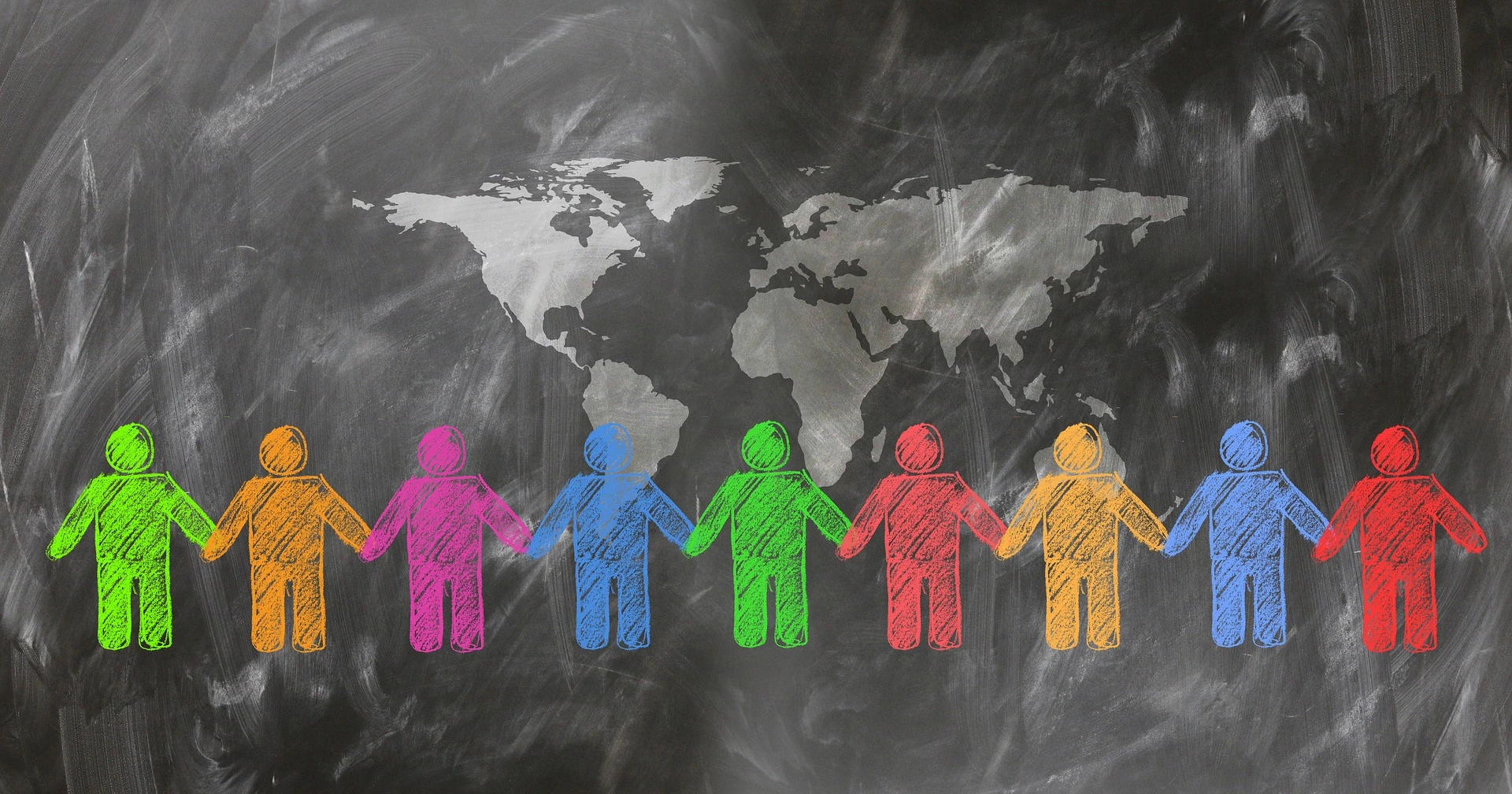Enhance Engagement & Retain Knowledge Easily by Social Learning

Introduction
A recent study revealed that 80% of what we learn is through observation and social interaction, highlighting the profound impact of social learning. Social learning, simply put, is learning from others. It’s about observing, imitating, and modeling behaviors, attitudes, and emotions. In today’s fast-paced world, social learning is crucial. It enhances our retention rates, boosts engagement and motivation, and develops essential social and communication skills. Understanding and implementing social learning can transform both educational and professional environments, creating dynamic and effective learning experiences.
The Science Behind Social Learning
Social learning is more than just acquiring knowledge; it’s about how we observe, imitate, and model behaviors, shaping our understanding of the world. Albert Bandura’s Social Learning Theory delves into this intricate process, highlighting the power of observation and the impact of modeling.
At its core, Bandura’s theory suggests that we learn not only through our own experiences but also through observing others. This means that we don’t need to directly experience something to learn from it; we can simply watch and learn.
Observation is the first step in social learning. By watching others, we can see what they do and how they do it. This observational learning can be as simple as observing a friend tying their shoelaces in a new way or as complex as learning a new language by watching and listening to others speak it.
Once we have observed a behavior, we may choose to imitate it. Imitation is the process of mimicking the actions of others. This can be a powerful tool for learning, as it allows us to learn from the successes and failures of others without having to experience them ourselves.
Modeling is another key concept in social learning. Modeling occurs when we not only observe and imitate the behaviors of others but also internalize and adopt those behaviors as our own. This can lead to long-lasting changes in behavior and can shape who we are as individuals.
However, social learning is a complex process that involves observation, imitation, and modeling. By understanding these concepts, we can better understand how we learn from those around us and how we can use this knowledge to improve our own learning experiences.
Benefits of Social Learning
Social learning offers a multitude of benefits that can enhance our lives in various ways. One of the key advantages is enhanced retention rates. When we learn socially, we are more likely to remember information because we are actively engaging with it in a meaningful way.
Additionally, social learning can lead to increased engagement and motivation. Learning with others can be more enjoyable and stimulating, encouraging us to stay focused and committed to the learning process.
Furthermore, social learning promotes the development of social and communication skills. By interacting with others, we learn how to communicate effectively, collaborate, and work as part of a team.
Overall, social learning is not just about acquiring knowledge; it’s about how we interact with the world around us. By embracing social learning, we can improve our retention rates, enhance our engagement and motivation, and develop crucial social and communication skills that will benefit us in all aspects of life.
Social Learning in Education

Social learning plays a pivotal role in modern education, transforming traditional teaching methods into dynamic, interactive experiences. In the classroom, strategies like group projects and collaborative learning capitalize on social interactions to deepen understanding and foster teamwork.
Peer tutoring and mentorship programs are also effective in enhancing social learning. These initiatives not only benefit the learner but also the tutor, reinforcing knowledge through teaching.
Technology integration further amplifies social learning. Platforms like social media and online forums facilitate discussions and idea sharing beyond the confines of the classroom. Educational tools such as Edmodo and Google Classroom provide structured environments that support social learning, offering features like group discussions and collaborative assignments.
By embracing social learning in education, students can develop not only academic knowledge but also crucial social and communication skills. This approach prepares them for a world where collaboration and teamwork are essential for success.
Social Learning in the Workplace

In today’s fast-paced work environment, social learning has emerged as a cornerstone of professional development. Companies are increasingly recognizing the value of fostering a culture of continuous learning and collaboration.
Professional development initiatives, such as mentoring and coaching programs, are key components of social learning in the workplace. These programs pair experienced employees with less experienced ones, allowing for knowledge transfer and skill development in a supportive environment.
Collaborative workshops and training sessions are also effective in promoting social learning. These interactive sessions encourage employees to learn from each other’s experiences, share best practices, and work together to solve problems.
Tools and technologies play a crucial role in facilitating social learning in the workplace. Enterprise social networks like Slack and Microsoft Teams provide platforms for employees to connect, share ideas, and collaborate on projects. Learning management systems (LMS) with social features enable organizations to deliver training content in a social and interactive manner, encouraging engagement and knowledge sharing among employees.
By implementation social learning, organizations can create a more engaged and knowledgeable workforce, ultimately driving innovation and success.
Overcoming Challenges in Social Learning

Implementing social learning in any setting can be challenging, but with the right approach, these obstacles can be overcome to create a more effective learning environment.
One common obstacle is resistance to change. Some individuals may be hesitant to adopt new learning methods, especially if they are used to more traditional approaches. Managing diverse groups with varying learning styles and preferences can also pose a challenge.
To address these challenges, organizations can cultivate a culture of openness and collaboration. By encouraging employees to embrace new ideas and share their knowledge and experiences, resistance to change can be minimized. Providing clear guidelines and objectives for social learning initiatives can also help manage diverse groups and ensure that everyone is working towards a common goal.
By overcoming these challenges, organizations can create a more inclusive and effective learning environment, where employees are empowered to learn from each other and grow both personally and professionally.
Real-World Examples of Social Learning Success
The impact of social learning is vividly demonstrated through real-world examples that showcase its effectiveness in both educational and professional settings.
In a school setting, a case study from a primary school illustrates how group projects and collaborative learning activities can significantly improve students’ understanding and retention of complex concepts. By working together, students not only learn from their teacher but also from each other, reinforcing their learning through peer interaction.
In a corporate environment, a case study highlights how a company implemented mentoring and coaching programs to enhance employee development. Through these programs, employees were able to learn from experienced colleagues, gaining valuable insights and skills that contributed to their professional growth and the overall success of the organization.
Testimonials from students and professionals further validate the effectiveness of social learning. Quotes from individuals who have benefited from social learning emphasize how it has helped them develop new skills, gain confidence, and succeed in their respective fields.
These real-world examples underscore the power of social learning in driving positive outcomes and highlight its importance in fostering continuous learning and growth.
How to Implement Social Learning in Your Environment
Implementing social learning in your environment can be a rewarding endeavor, enhancing the learning experience and fostering a culture of collaboration and knowledge sharing. Here’s a step-by-step guide to help you get started:
1. Assess current learning culture
Understand how learning currently takes place in your environment. Identify areas where social learning can complement or improve existing practices.
2. Set clear goals and expectations
Define what you hope to achieve through social learning. Establish clear, measurable goals and communicate them to all stakeholders.
3. Choose appropriate tools and methods
Select tools and methods that align with your goals and are suitable for your environment. This could include online platforms, group activities, or mentorship programs.
4. Monitor and evaluate progress
Regularly assess the effectiveness of your social learning initiatives. Solicit feedback from participants and make adjustments as needed to ensure continuous improvement.
To ensure success, consider the following tips:
Encourage participation and interaction: Create a supportive environment where individuals feel comfortable sharing their thoughts and ideas.
Provide continuous support and feedback: Offer ongoing support to participants and provide constructive feedback to help them grow and develop.
By following these guidelines and tips, you can successfully implement social learning in your environment, enhancing learning outcomes and fostering a culture of collaboration and growth.
Conclusion
Looking back at our exploration of social learning, I’ve highlighted its significance in enhancing learning experiences. From understanding Albert Bandura’s theory to examining real-world examples, the benefits are evident. Implementing social learning involves assessing current practices, setting clear goals, and selecting appropriate tools. By encouraging participation and offering continuous support, we can maximize its impact. I encourage you to start incorporating social learning strategies in your learning or professional environments. Embracing social learning can lead to a more engaging and effective learning experience for everyone involved.
Additional Resources
For those eager to delve deeper into the realm of social learning, a plethora of resources await. Here’s a curated selection to enrich your understanding and implementation of social learning strategies:
1. Further Reading
Explore research papers, articles, and books that delve into the nuances of social learning. Dive into the works of pioneers like Albert Bandura and discover the latest studies shaping our understanding of this dynamic field.
2. Tools and Platforms
Discover a range of tools and platforms designed to facilitate social learning. From collaborative online platforms like Edmodo and Google Classroom to enterprise social networks like Slack and Microsoft Teams, these tools can enhance your learning environment.
3. Expert Opinions
Gain insights from experts in the field of social learning. Interviews and quotes from thought leaders can provide valuable perspectives and practical tips for incorporating social learning into your educational or professional setting.
By exploring these additional resources, you can further enrich your knowledge and skills in social learning, paving the way for a more engaging and effective learning experience.
FAQs
1. What is social learning?
Social learning is a theory that suggests people learn from observing, imitating, and modeling the behaviors, attitudes, and emotional reactions of others.
2. How does social learning differ from traditional learning?
Traditional learning typically involves a teacher or instructor imparting knowledge to students through lectures or textbooks. In contrast, social learning emphasizes the role of social interaction and observation in the learning process.
3. What are the benefits of social learning?
Social learning can enhance retention rates, increase engagement and motivation, and promote the development of social and communication skills.
4. How can social learning be implemented in educational settings?
Social learning can be implemented in educational settings through group projects, collaborative learning activities, peer tutoring, and mentorship programs.
5. How can social learning be applied in the workplace?
In the workplace, social learning can be fostered through mentoring and coaching programs, collaborative workshops, and the use of tools and technologies that support social interaction and knowledge sharing.






